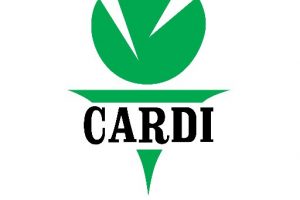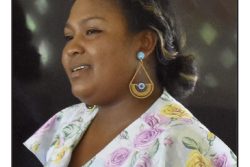 The Caribbean Agricultural Research Development Institute (CARDI) plans to roll out a mega stock feed project this year using some 5,000 acres of land that it has been granted by government to set up a farm and factory, sources say.
The Caribbean Agricultural Research Development Institute (CARDI) plans to roll out a mega stock feed project this year using some 5,000 acres of land that it has been granted by government to set up a farm and factory, sources say.
Located in the Intermediate Savannahs of Region 10, the planned project would see the growing of rice, corn and crops, which will be processed and used as animal feed locally, with the intention of later catering for the livestock needs of other CARICOM countries particularly Trinidad and Tobago. The multi-million US-dollar investment will be mobilised by CARDI.
Commissioner of the Guyana Lands and Surveys Commission (GL&SC) Trevor Benn told Sunday Stabroek, when contacted, that 5,000 acres have already been approved by his agency and that it was now up to CARDI to commence the project.
“CARDI has approval for the land already and it is up to them to decide when the project will start off,” he said.
Benn explained that while CARDI has a long-term proposal for 15,000 acres, it asked for 5,000 in the short-term. Once it develops the land and demonstrates the ability to maximise the use of it, then a decision would be made on the remainder.
“They have 5,000 acres in the Intermediate Savannahs at the moment…it is up to them to demonstrate that they can develop that and on that basis will a decision be made on the rest,” Benn asserted.
This newspaper reached out to head of CARDI, Dr Cyril Roberts, for a comment on the project but he explained that he was not at liberty to speak at the time. “In two weeks’ time you will be given a full update on the project,” Roberts said.
Through the Ministry of Agriculture, CARDI was able to broker the agreement, which will see the entities working collaboratively, this publication was told.
Government has remained silent on the project but since taking office in 2015 it has been emphasising the potential of the Intermediate Savannahs for investments in agriculture and agro-processing.
Minister of Agriculture Noel Holder last year said the Intermediate Savannahs were the new “agricultural frontier” of this country.
”…The hinterland and Intermediate Savannahs of Region Ten have been earmarked as Guyana’s new agricultural frontier, as the country continues its quest to narrow the gap between the coastland and hinterland regions,” Holder last year told a World Food Day forum in Region Ten.
On its website the ministry says the Intermediate Savannahs “cover areas of approximately 2,700 sq. km or 270,000 hectares.” It consists of 70 percent forest and 25 percent of savannah lands and comprise five distinct areas: The Kimbia/Ebini Savannah (East of the Berbice River); The Wiruni Savannah (West of the Berbice River); The Ituni/Tacama Savannah (West of the Berbice River); The Kibilibiri Savannah (West of the Berbice River); and The Eberoabo Savannah (West of the Berbice River).
Holder had announced earlier last year that as part of improving access to the intermediate savannahs, government would commence construction of an access road from Wire Bridge to Tacama, Berbice.
With funding made available through a loan agreement from the Inter-American Development Bank for that project, as part of the Sustainable Agriculture Development Programme, works were scheduled to commence in April 2017.
Holder also had pointed to works the National Agricultural Research and Extension Institute (NAREI) was doing on lands there, reporting that the institute had carried out successful pilot plots at the location, where it planted some ten acres of mixed fruits, including mangoes, guavas, avocadoes, golden apples and citrus. According to Chief Executive Officer of NAREI Dr Oudho Homenauth, such efforts by the Institute augur well for reducing the costs and resources attached to conducting required feasibility studies
“This type of work is necessary and something NAREI gives priority to [to] bring much needed support to investors. The Intermediate Savannahs remain a lucrative area for development and has received substantial interest by investors.” he said.
The Guyana Livestock Development Authority (GLDA) is also making use of the savannahs, with Holder reporting that there were about 512 head of top purebred cattle grazing there as at the first quarter of last year. GLDA had anticipated that at the rate the herd was progressing, it would grow to 2,000 head of cattle over the next two years.








